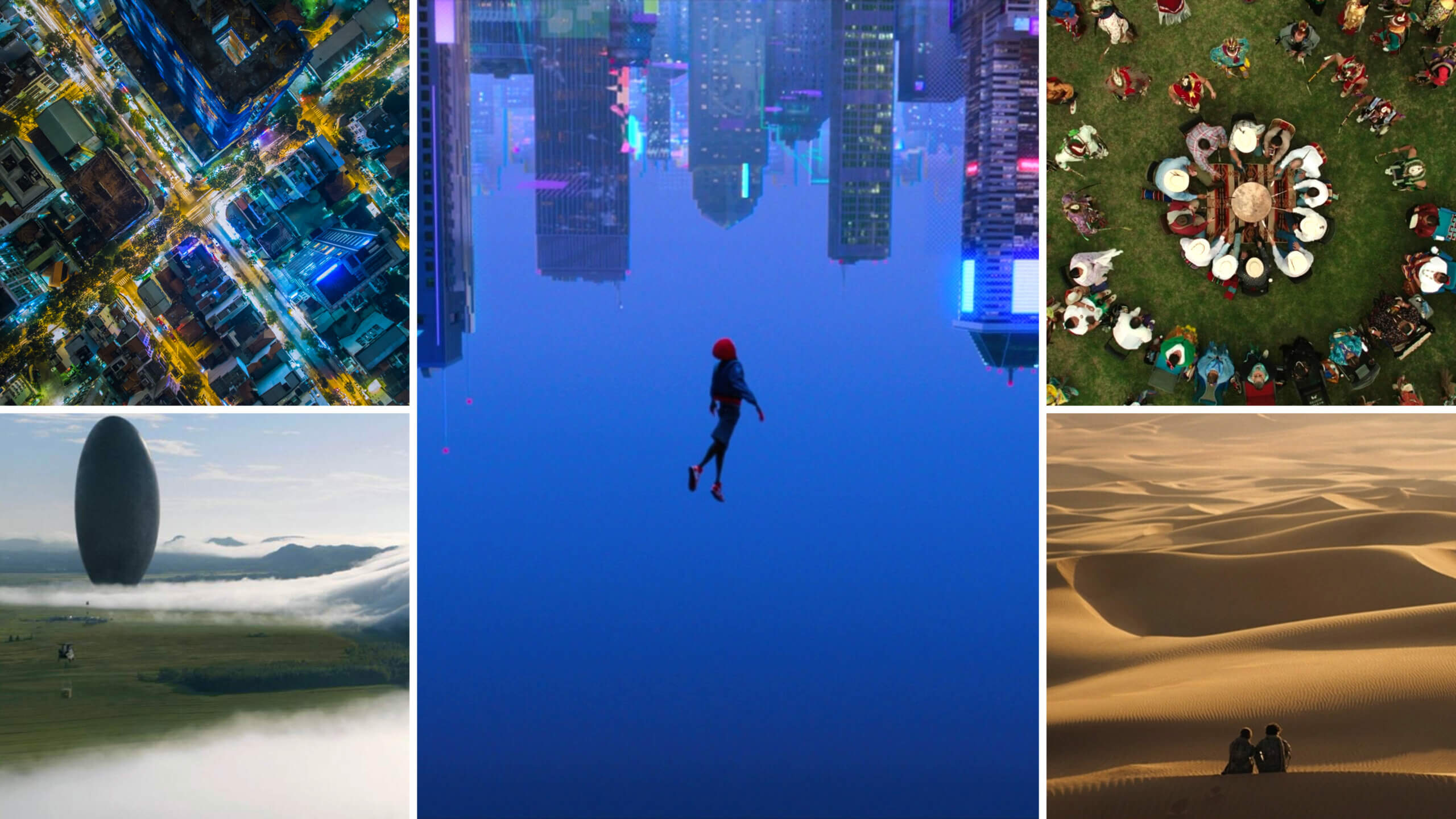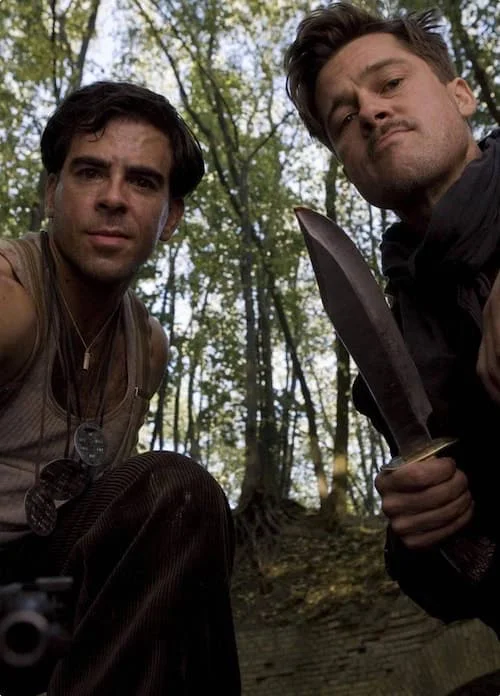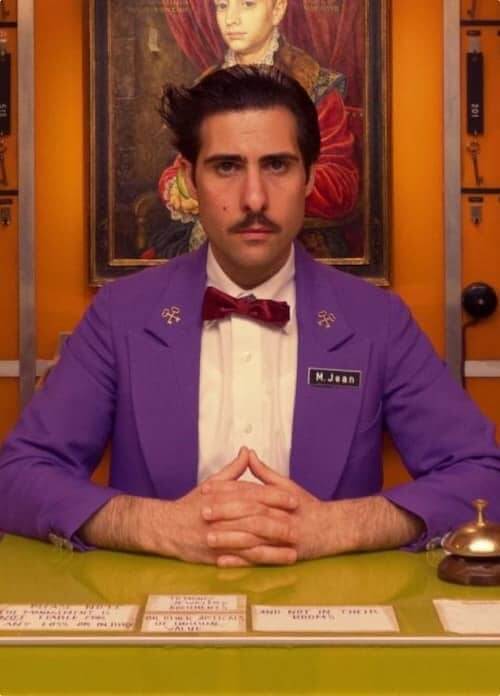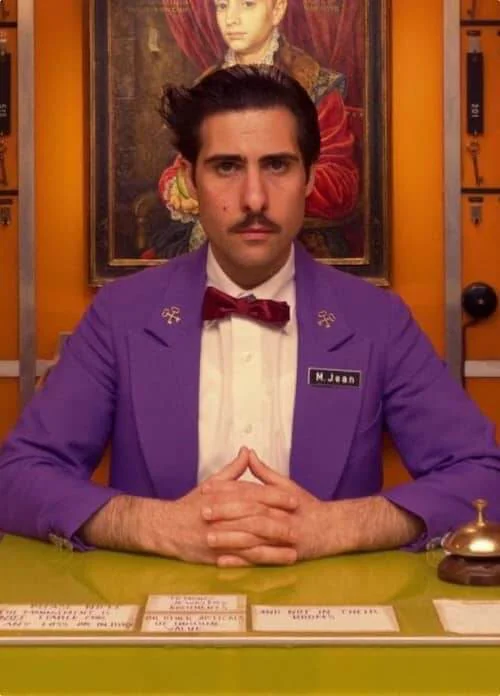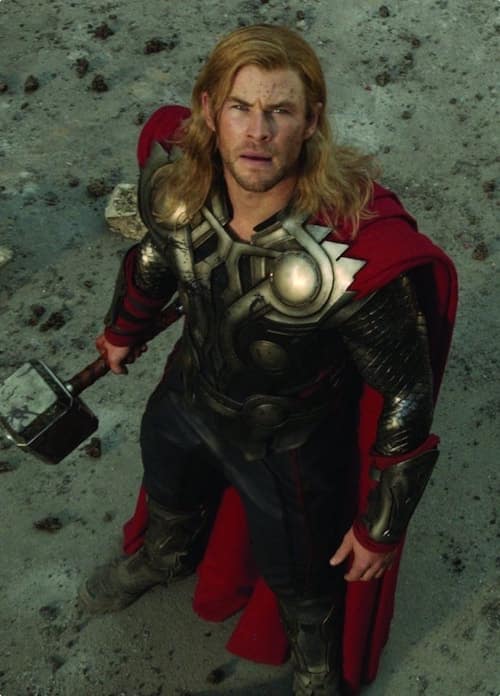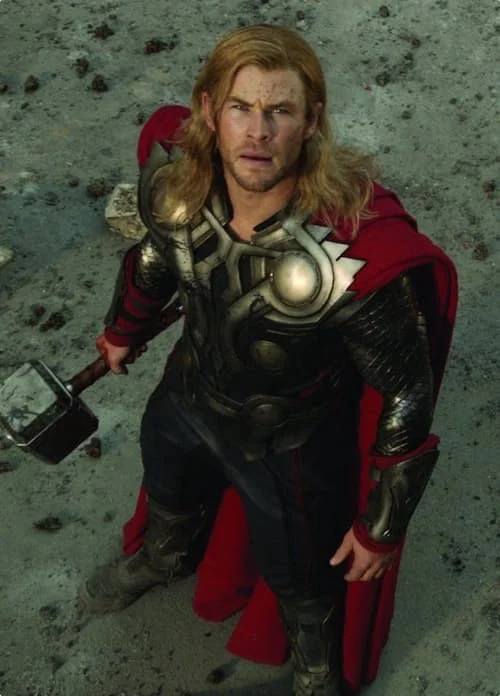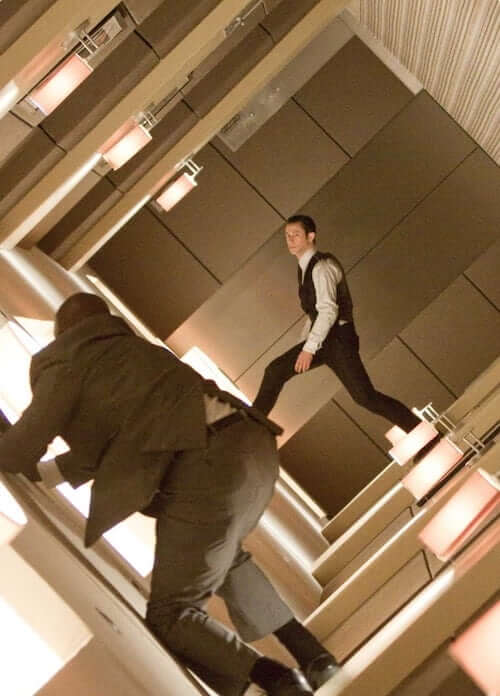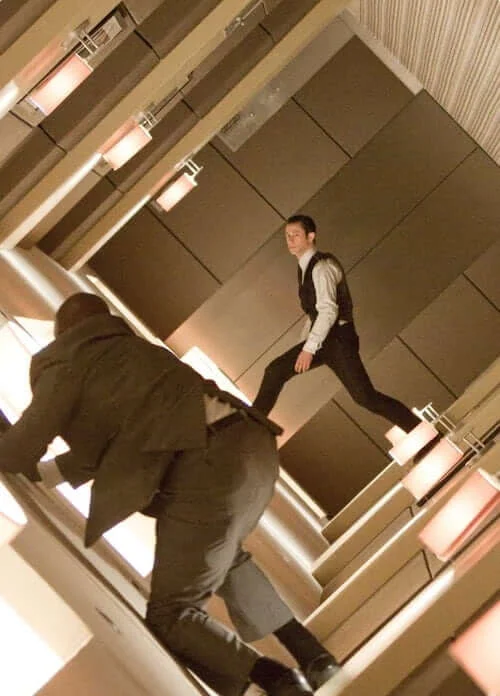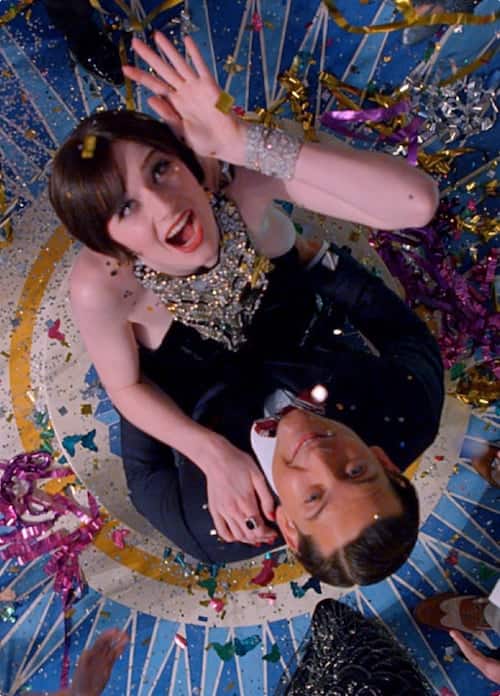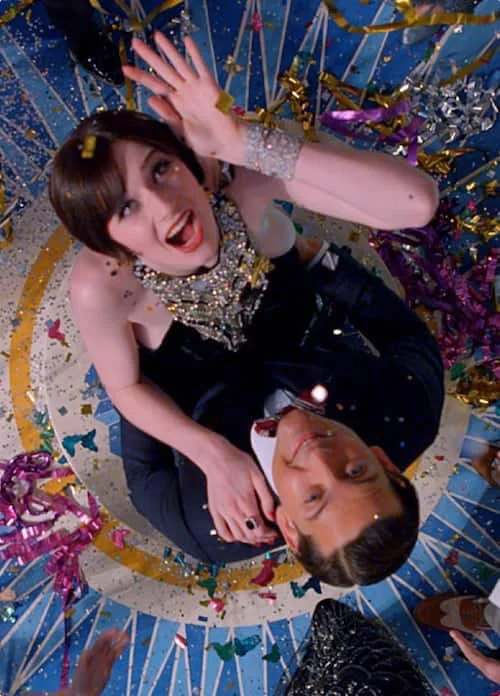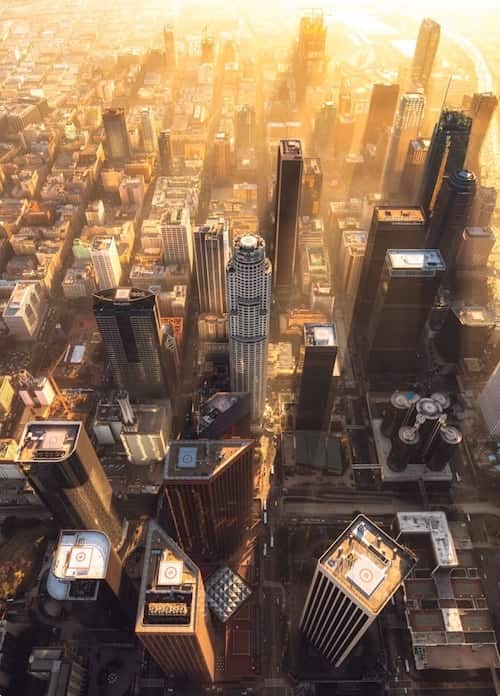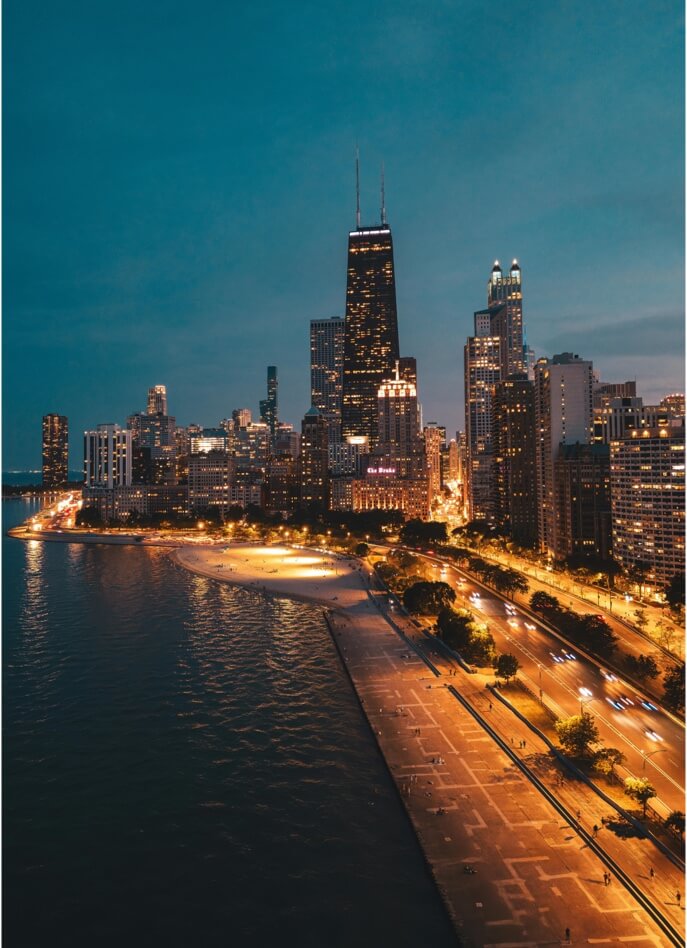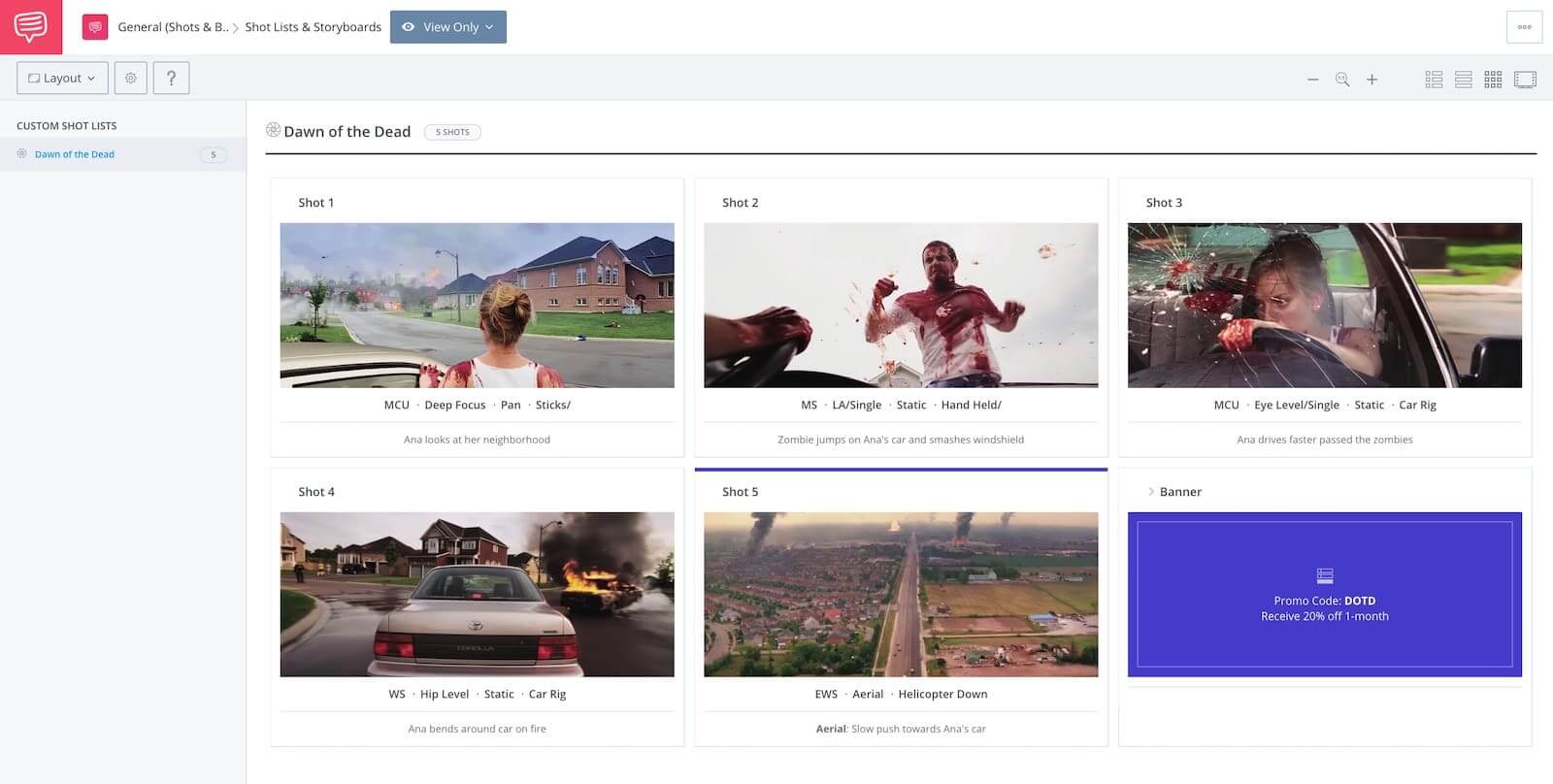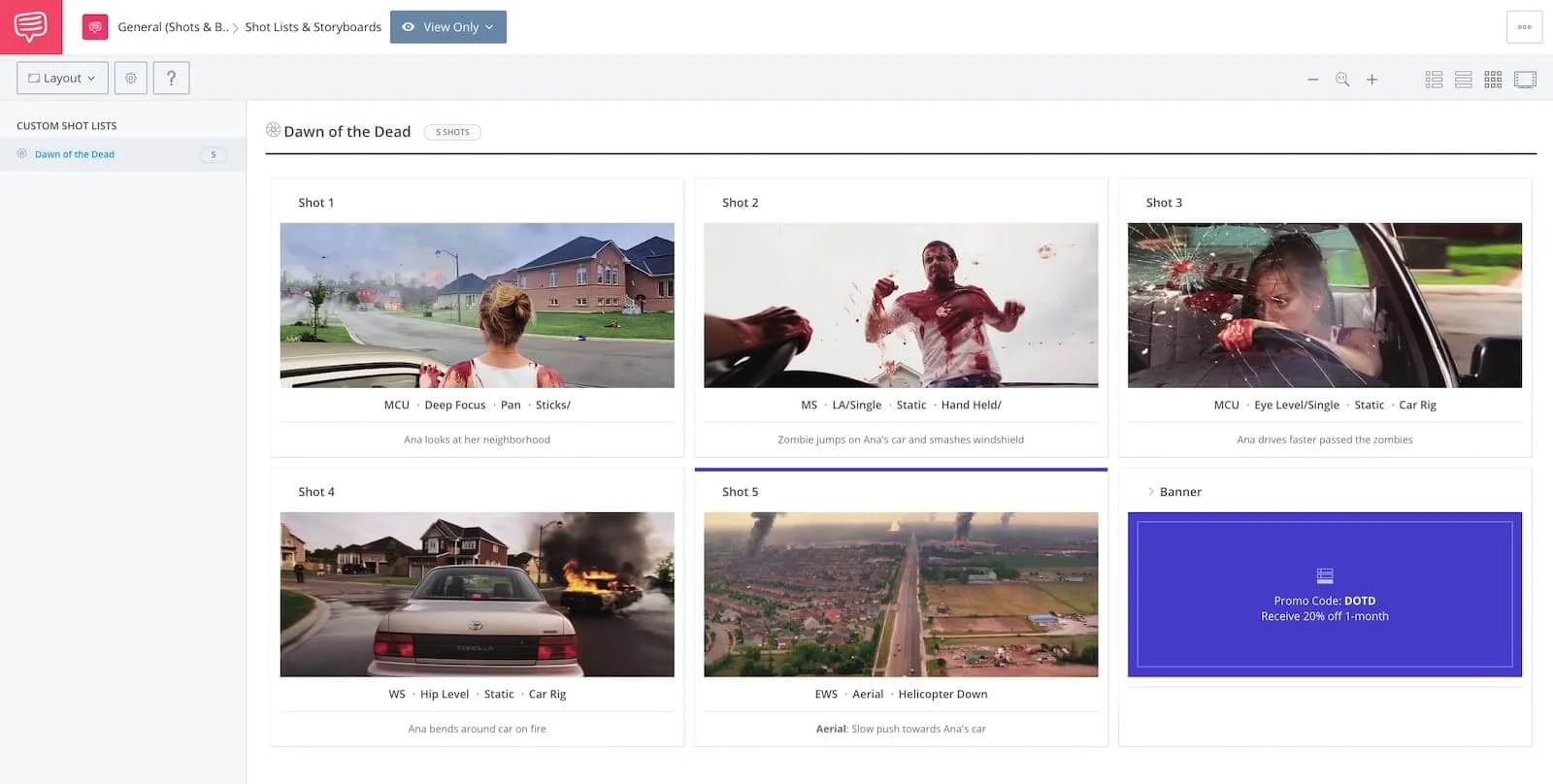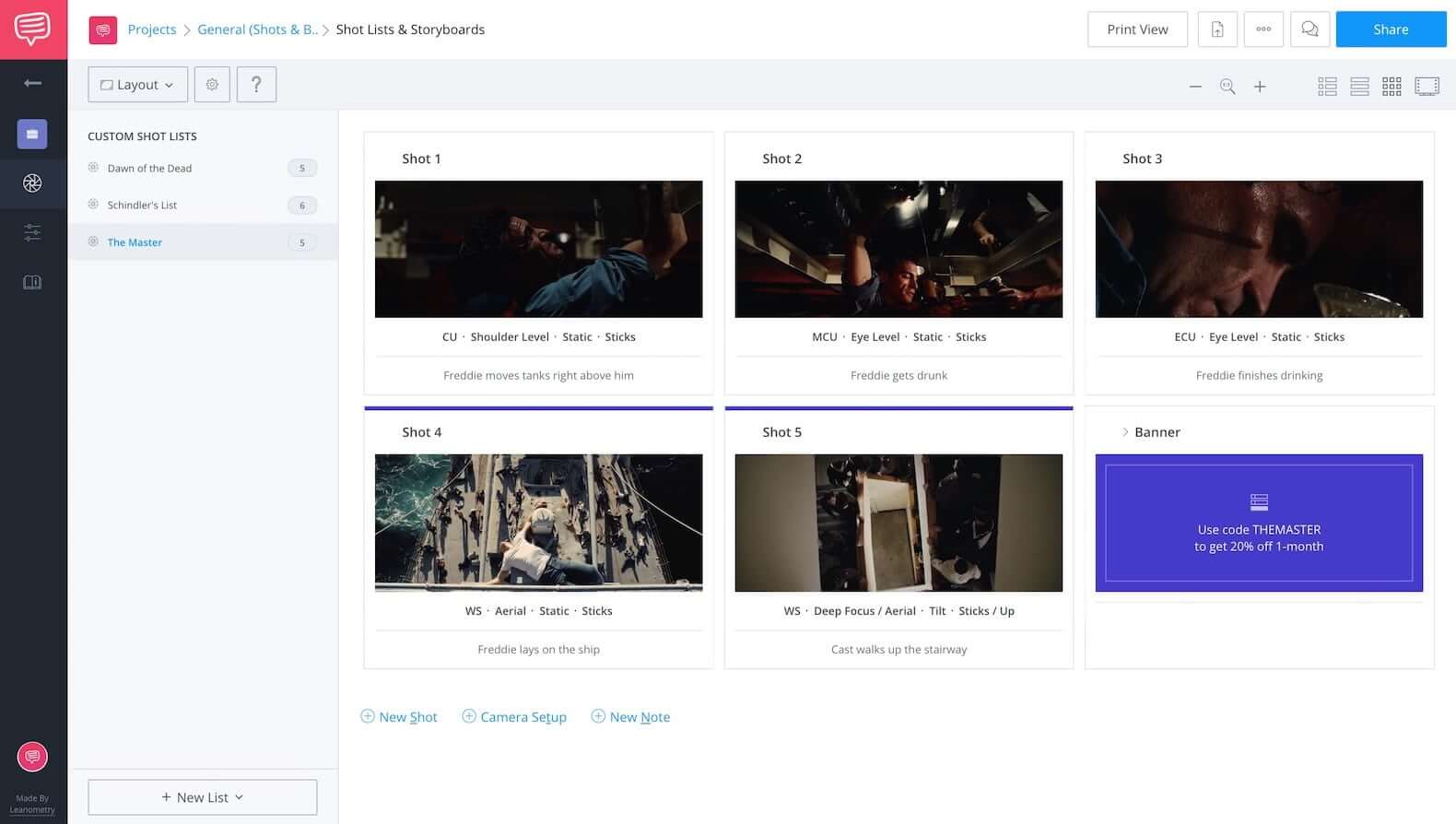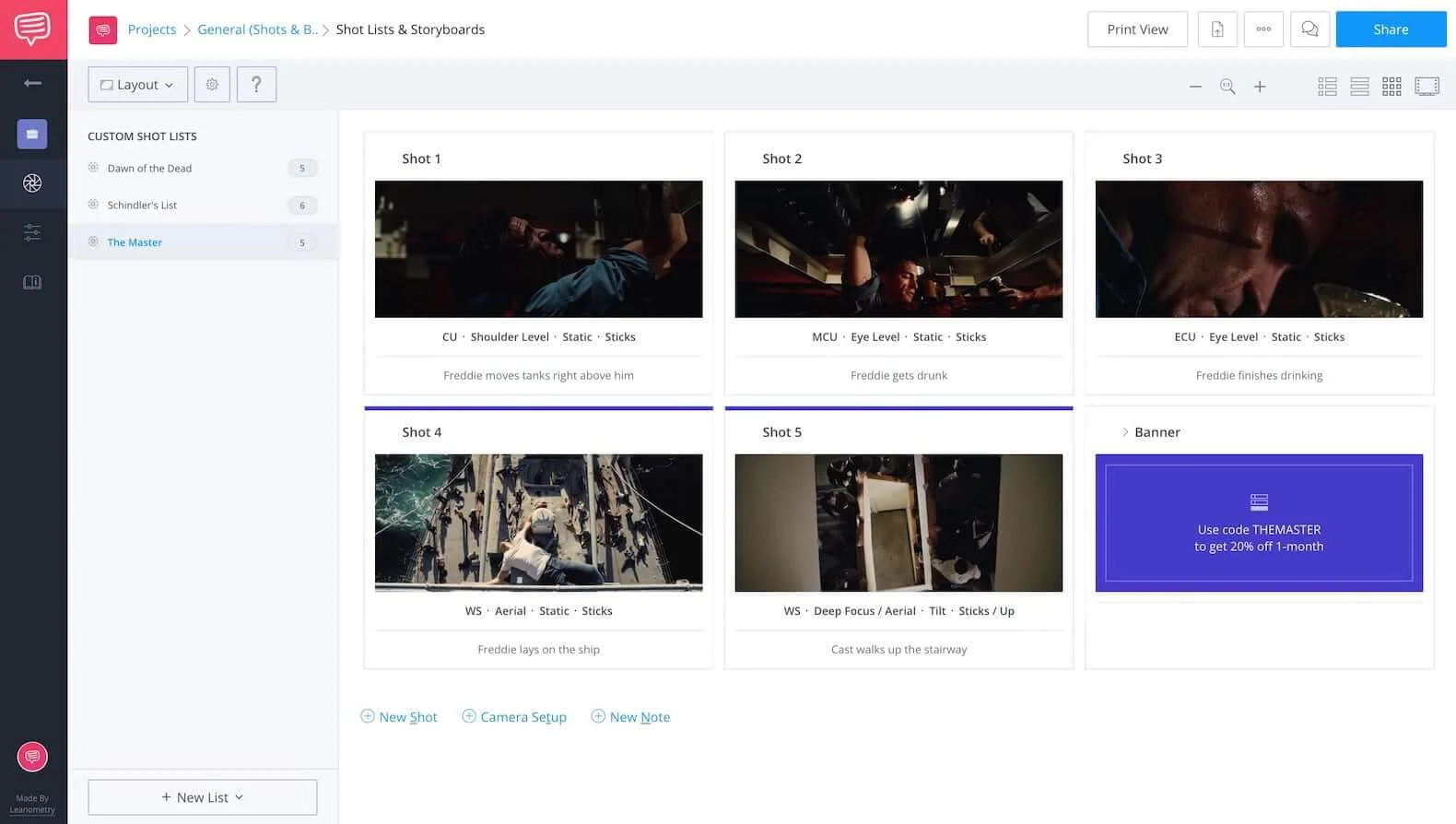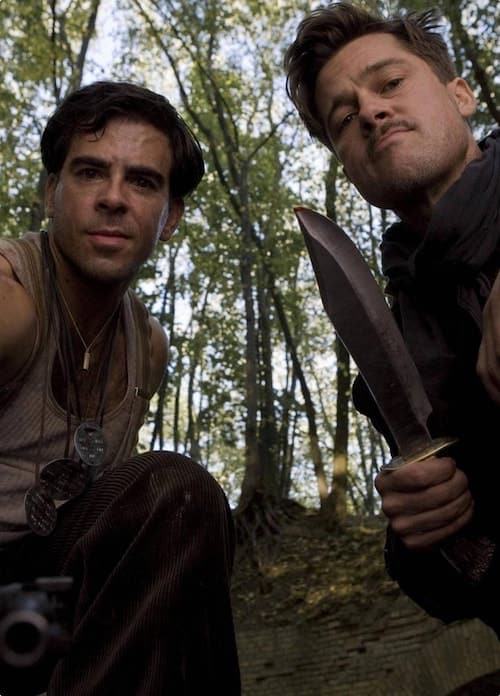When you’re inside a movie or TV show most of the world is built around the character’s POV. That can feel limiting. But what about when the filmmaker takes you out of the world and reminds you that you’re a viewer and not a participant (like an aerial shot)?
Today, we’re going to go over aerial shot examples to learn how you can use it in your projects to accentuate details and themes. Plus, we’ll show you how to add it to your shot lists.
Let’s dive in.
Watch: Ultimate Guide to Camera Shots
Aerial shot Basics
The aerial shot explained
The aerial shot is a classic camera angle that captures a bird’s eye (or God’s eye) view of the action going on below.
Aerial shot definition
What is aerial shot?
An aerial shot is a shot that's taken from an elevated vantage point than what is framed in the shot. Aerial shots gives viewers a deeper understanding of what is happening below, both literally and metaphorically.
More about aerial shots:
- Other names: God’s eye view shot, birds eye view shot, aerial view, raised shot, elevated shot, overhead shot.
- Fun Fact: The first aerial shots were taken from balloons in the early 1800s. The use of drones with video equipment has reinvented the aerial shot.
An aerial shot obviously requires specific camera equipment. What you use has varied throughout the years — from balloons to helicopters to drones — but the end result is the same. Here's a video breakdown of the various types of camera rigs, how they work, and how they add to the "feel" and look of a shot.
Ultimate Guide to Camera Gear • Subscribe on YouTube
In a nutshell, an aerial shot often involves the camera being positioned on an elevated platform, aircraft, or floating object.
This is what a birds eye shot (God's eye shot) looks like
In fact, it’s easy to pick out an aerial shot when you see one. You'll find aerial shots in movies often, especially crime films.
Aerial shot example in crime films.
There are several different kinds of aerial shots. You can have a bird’s eye shot, god’s eye shot, and overhead shots. We’ll go over all of them below.
Aerial shots help directors and cinematographers define the world that the characters inhabit which is a powerful storytelling technique.
For instance, aerial shots are so effective that you'll also see them on movie posters. Who doesn't like aerial shots in movies? But to pull them off properly, you'll need to plan them. That’s where the shot list is crucial.
CAMERA ANGLES
Get Inspired. Explore More Angles.
Explore the different types of camera angles, and learn how to combine them with other shot specs for visual storytelling.
Different Types of Camera Angles
shot listing your aerial shots
The anatomy of an aerial shot
So, you need to use the aerial shot to set up where your film takes place or even what your character is up against. What do you do now? You need to put it in a shot list so your DP can anticipate and prep. Aerial shots take lots of planning.
Are you shooting your aerial shot with a drone or a crane? Do you need to schedule out a plane ride? Is there movement in the aerial shot, or will it be static?
Now, we’ll examine an effective aerial shot example and see how it’s shot listed.
This one comes from Zack Snyder’s Dawn of the Dead.
Let's watch the full scene first, for context:
Zach Snyder burst onto the scene with this god’s eye view.
This shot has a great duality. We start with Sarah Polley in her car, then transition overhead. This takes us from a personal view, and transfers her gut feeling and gives it scope.
This intimacy directs our perspective. We follow her car when we go wide and in the air. We still are able to take in the destruction like the shot in The Birds, but this time it’s personal.
By this point, we know who's in danger. We also know that she's alone.
Let’s reverse-engineer this aerial shot and look at how Zack Snyder makes it work so effectively.
Taking it back to the shot list, the scene starts with Ana getting into her car to flee the confusing carnage.
Snyder bounces back and forth from close up shots of Ana to tracking shots following her car. She speeds through increasingly chaotic surroundings: a swerving cop car, an explosion, screaming bystanders.
And the scene ends with the gut-punch of the aerial shot. Ana is just tiny survivor in a world gone mad. This perspective conveys her solitude, and the challenges she will surely face as the story unfolds.
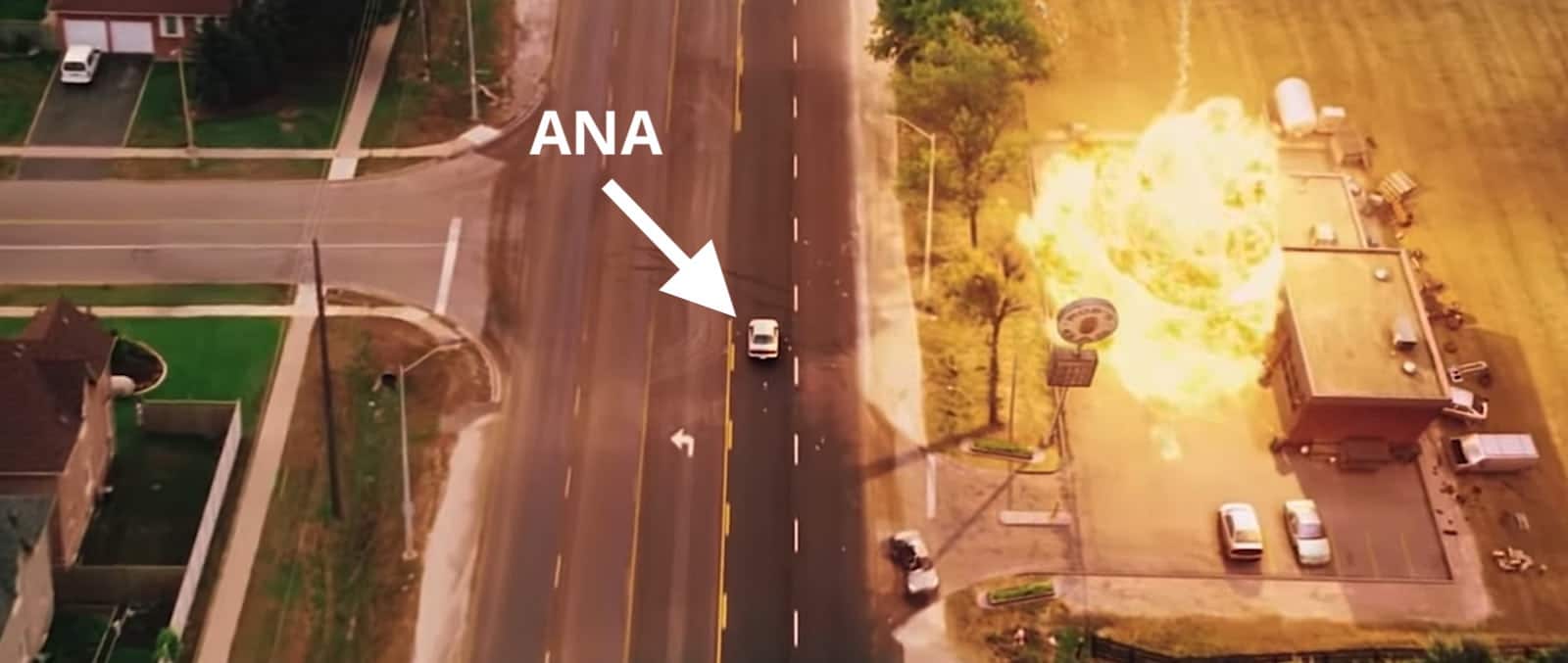
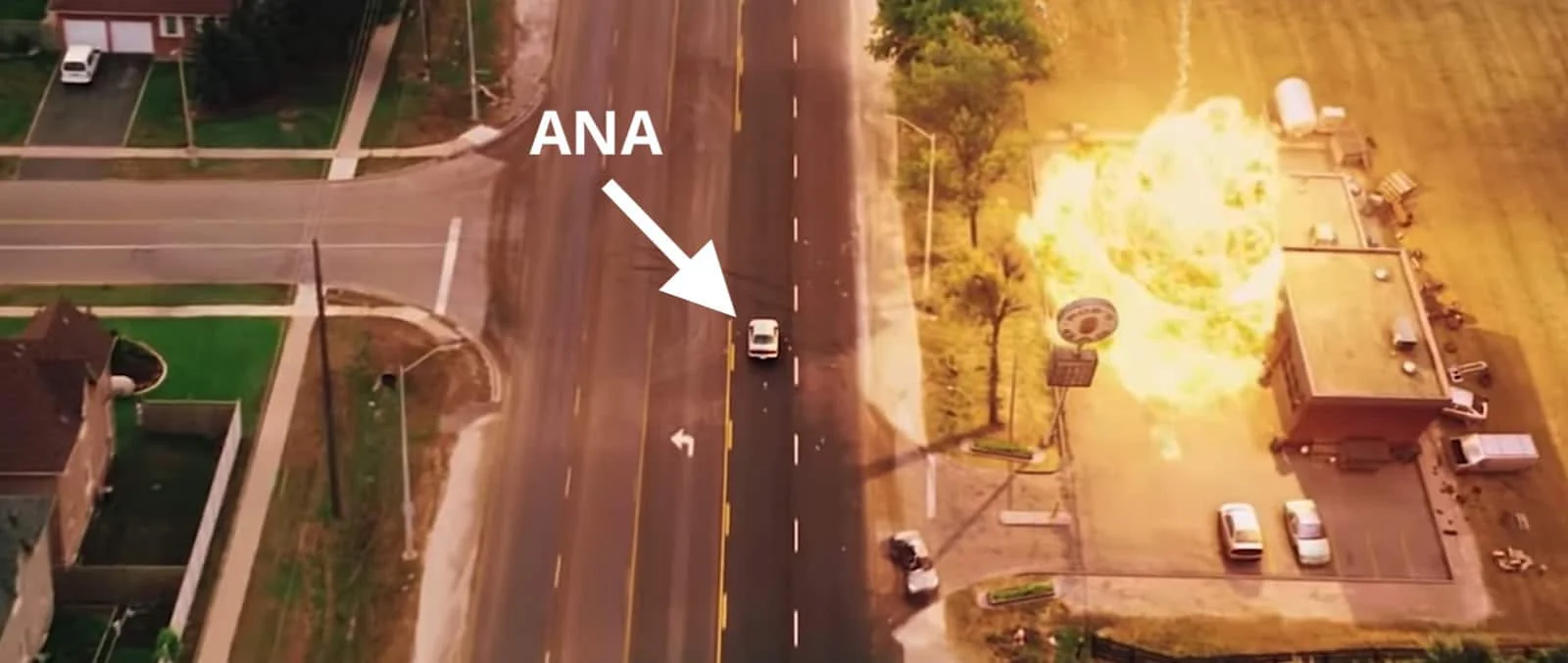

Shot Size: Aerial Shot • Tracking • Push In
Planning complicated scenes that involve aerial shots is a lot like surviving a zombie apocalypse.
It’s a lot to choreograph. A lot of planning. Tons of moving parts.
When planning aerial shots, you’ll want your shot list to take the extra step to account for lengthy prep and shoot times.
Modern shot listing software usually includes an automatic time calculator so you can estimate times for shots, setups, and key events like meal breaks and company moves.
View the entire Dawn of the Dead shot list below:
Also, this gives you time to think about the intangibles for your shoot. For example, what if you want to add an aerial shot that rivals some of the best camera shots of all time?
BEST AERIAL SHOTS IN MOVIES
The best aerial shot examples
Aerial shots in movies can be done with a plane, or crane, or drone, or helicopter, but their use varies. The most standard aerial shot example is an establishing shot. Which tells us where we’re going.
They can feel arbitrary, and without deeper meaning.
The Room has the aerial shot definition locked down.
The best aerial shots in movies reveal something about the story or situation.
As an example, let’s take a look at the one at the end of this clip from Alfred Hitchcock’s The Birds.
This bird’s eye shot was done compositing bird footage over a painting.
As the gas station explodes, we get a tongue-and-cheek bird’s eye view shot from above. This shot has two effects.
It’s an obvious joke and a play on words, but it also shows the scope of the bird attack epidemic that’s on its way. We get the shot of the gulls circling. A sense of danger coming to the town. This isn’t going to end well for the human population here.
Remember when we said crime films love the aerial shot? The proof is in David Fincher’s modern classic, Zodiac.
God’s eye shot of a killer from Zodiac
In this scene, we follow a taxi being driven by the Zodiac Killer. The juxtaposition between the audio of the radio program he’s listening to and his driving.
The car is not swerving, not speeding.
This is a controlled killer on a mission. The audio in this scene is of a radio call-in show. We’re hearing people theorize what’s “driving” the Zodiac Killer while we see him driving.
why use an overhead shot?
Overhead shots with a god’s eye view
But what if you don’t want to go so huge? Is there a way to do an aerial shot and still find the depth of a character?
Maybe something like an overhead shot?
OVERHEAD SHOT DEFINITION
What is an overhead shot?
The overhead shot is a high angle shot almost directly (or literally directly) above the subject. It allows the viewer in on the action but still maintains character detail.
More about overhead shots:
- Also known as: The god’s eye shot.
- Deeper meaning: The overhead shot allows us to pass judgement on the subject or make an observation about their place in the world.
The overhead shot usually places the audience in a wide shot just above the action. It helps convey the space to the audience.
This shot in The Untouchables shows us all the people who surround Al Capone and how important he must be to the narrative.
This overhead shot from The Untouchables starts the film.
overhead shot examples
Master the overhead shot
In The Master, Paul Thomas Anderson tells the story of Freddie Quell, a man apart from society. A man yearning to belong. We can tell that early on by the way he’s framed on this Navy ship:
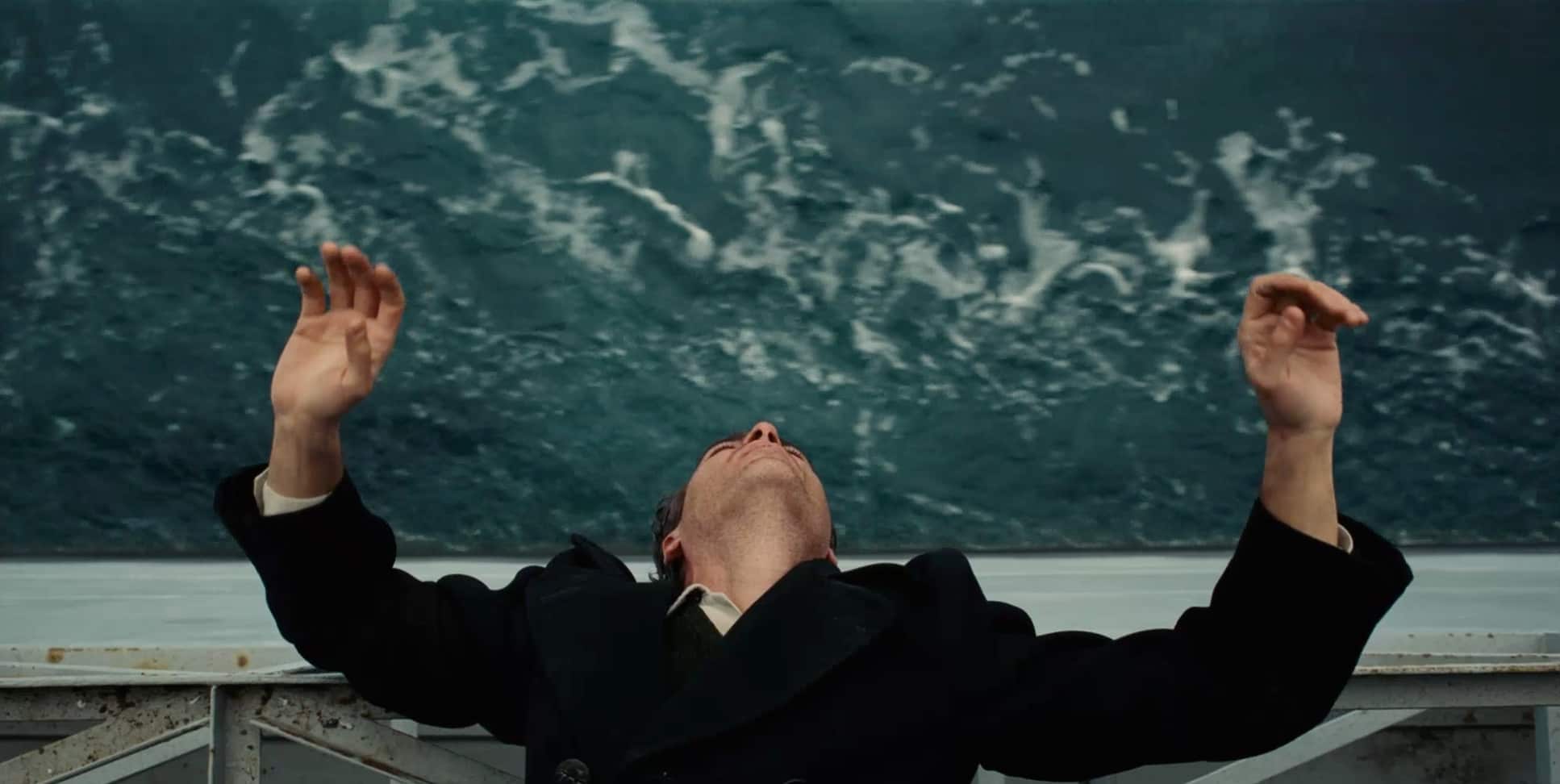
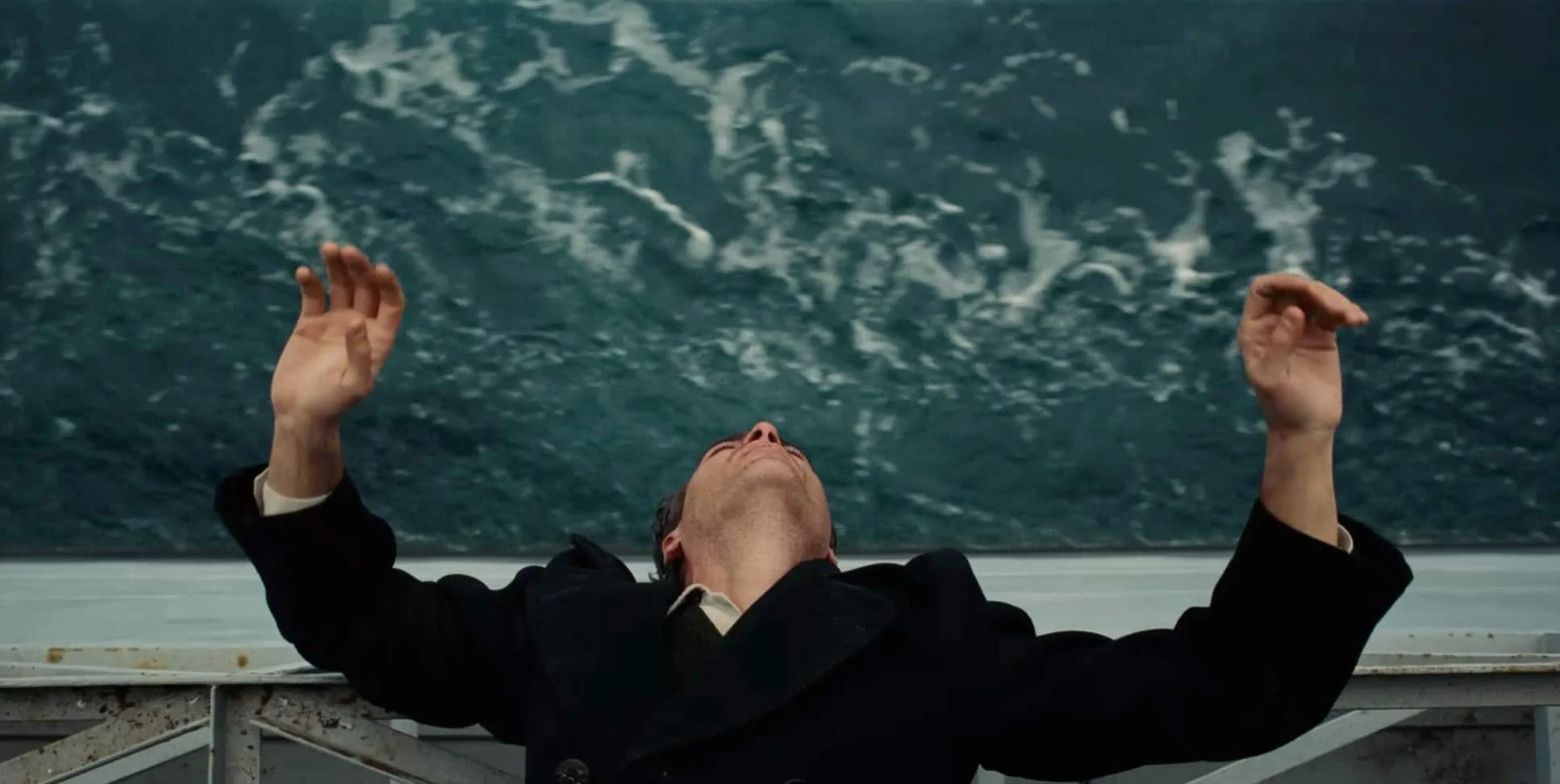

Overhead shot in The Master
Since the movie winds up being about religion, the overhead shot, or god’s-eye shot, is poignant here. It begs the question: Where does Freddie fit in?
For now, at the beginning of the movie, it’s by himself. We can tell he’s lonely.
But as we get deeper into the movie he finds a community, even if it is run by a charlatan.
Philip Seymour Hoffman's confrontation scene from "The Master"
Now, we’ll analyze how two key back-to-back overhead shots early in The Master set up character and theme. Let’s use a shot list to reverse-engineer the sequence.
In the first shot, we see Freddie Quell, played by Phoenix, secretly getting drunk below deck as a radio announcer talks about the end of World War II. Anderson shows Quell in close up here. We see and almost feel every ounce of the dark, dank sweatyness.
Next, we get the overhead shot of Freddie passed out, splayed on his back in the sunshine. Anderson wants us to “looking down” at his protagonist.
Below him, in the background, fellow sailors try to peg him with bananas and debris to wake him up.
The shocking cut to bright natural lighting is jarring; the aerial perspective disorienting. Quell is a man confused even when he’s unconscious.
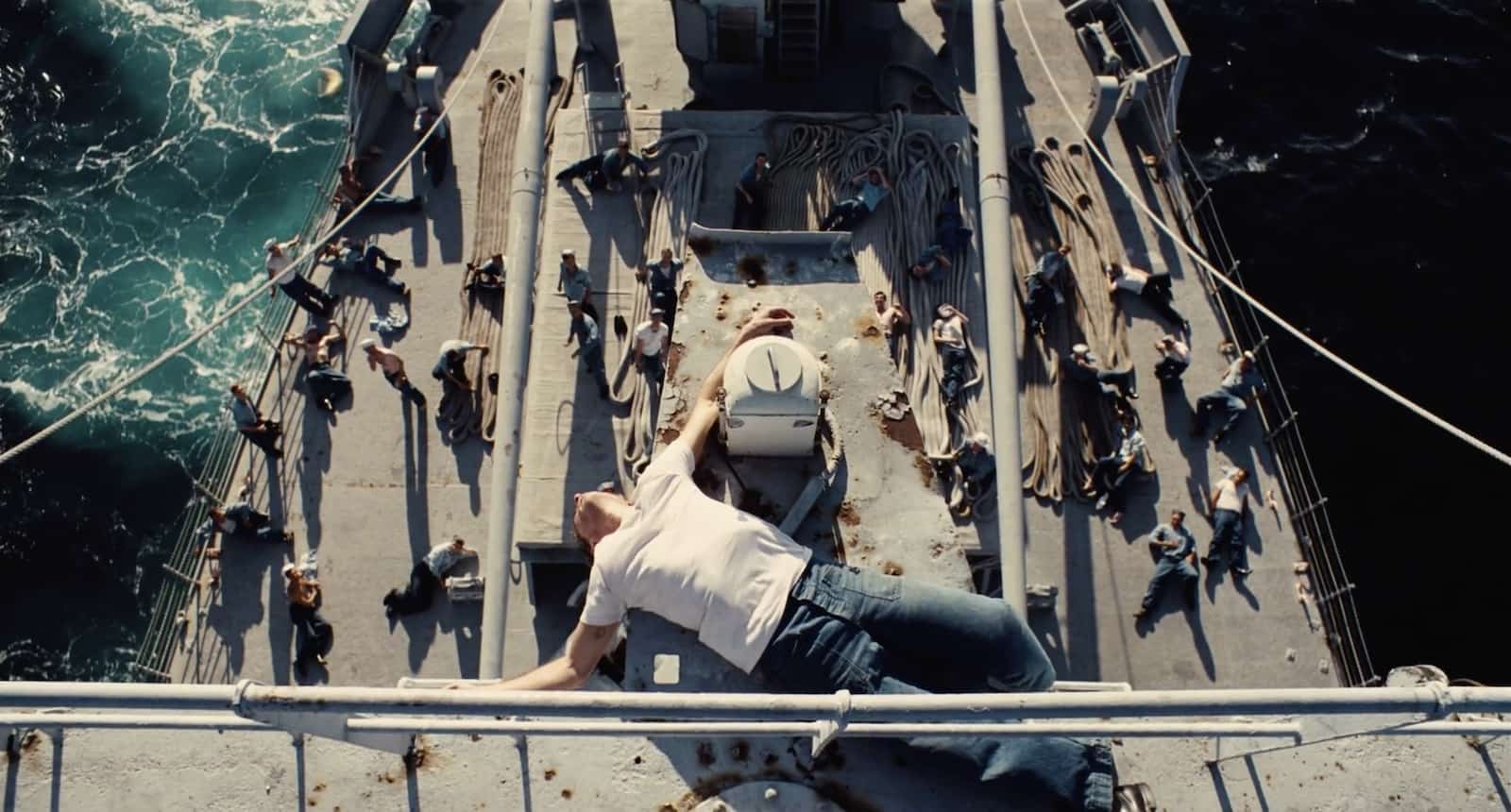
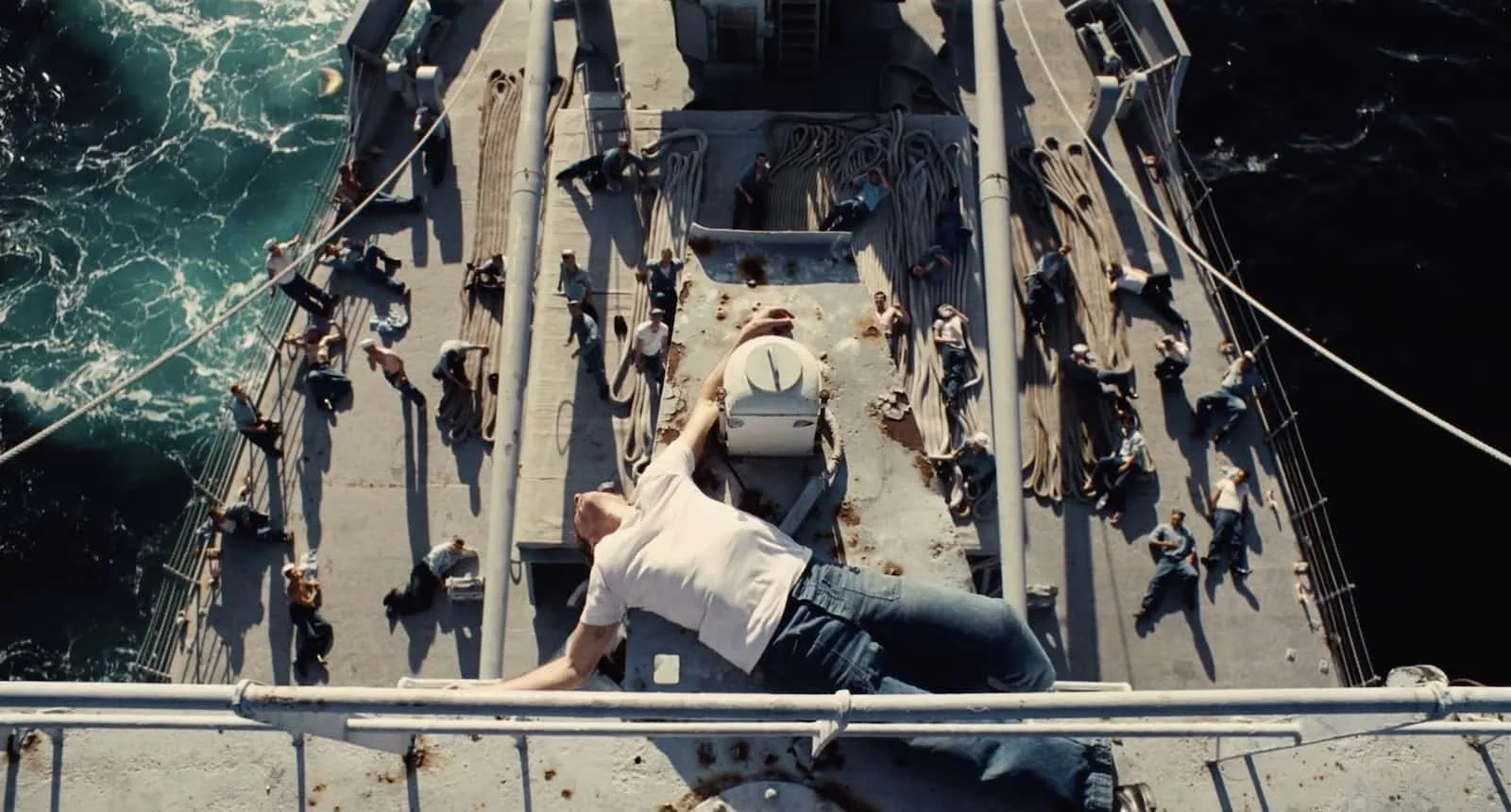

This aerial shot example exemplifies Quell
At last, Anderson gives us another overhead shot. Sailors trudge up a confined spiral staircase. There’s shot movement, too — a slight tilt. The shot emphasizes the swirling uncertainty that Quell and many of his comrades feel as they transition from war to peace.
The perspective, and the feeling of ambivalence and disorientation that Anderson conveys visually shot by shot, is one that will haunt Quell’s life.
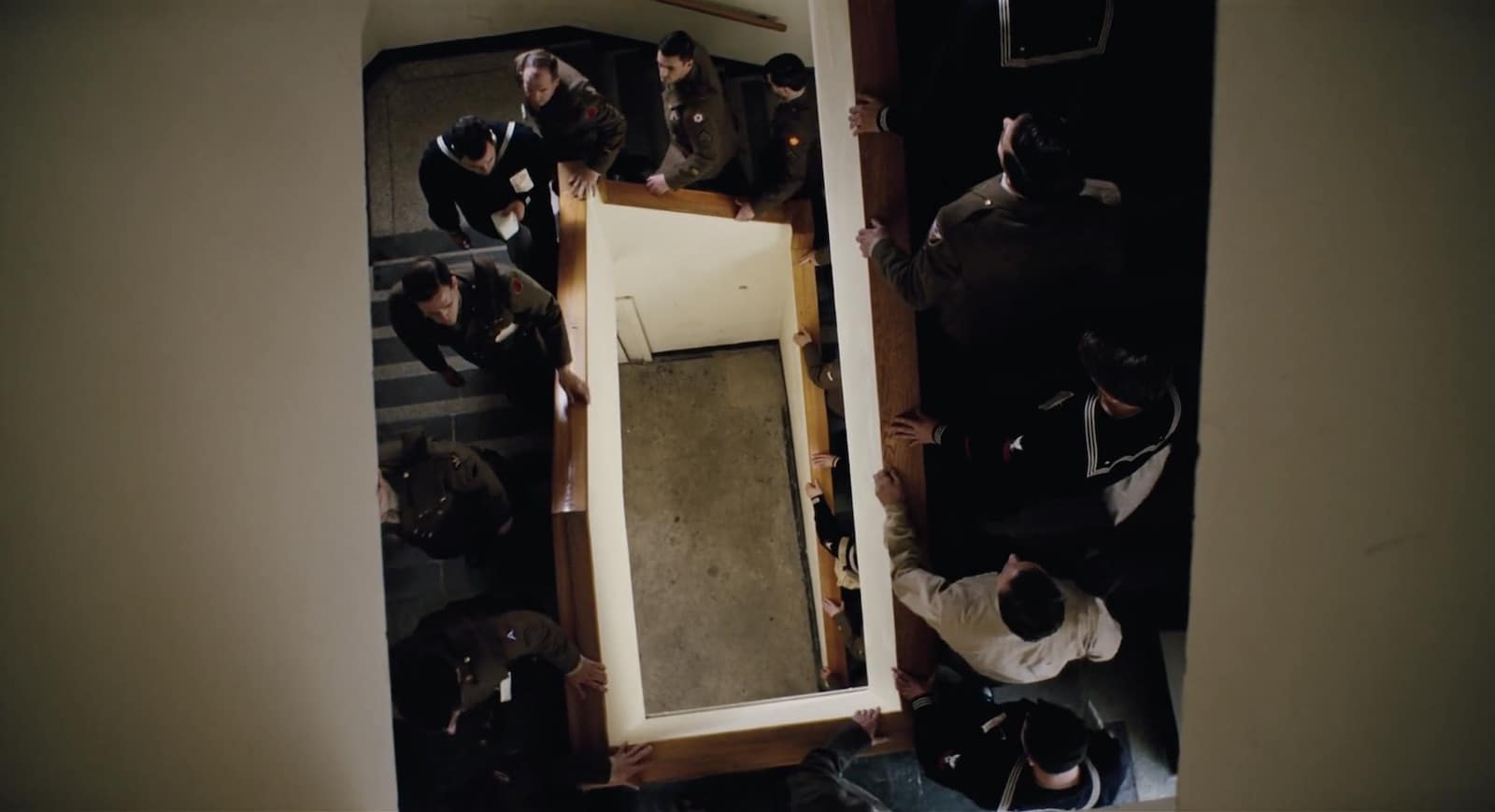
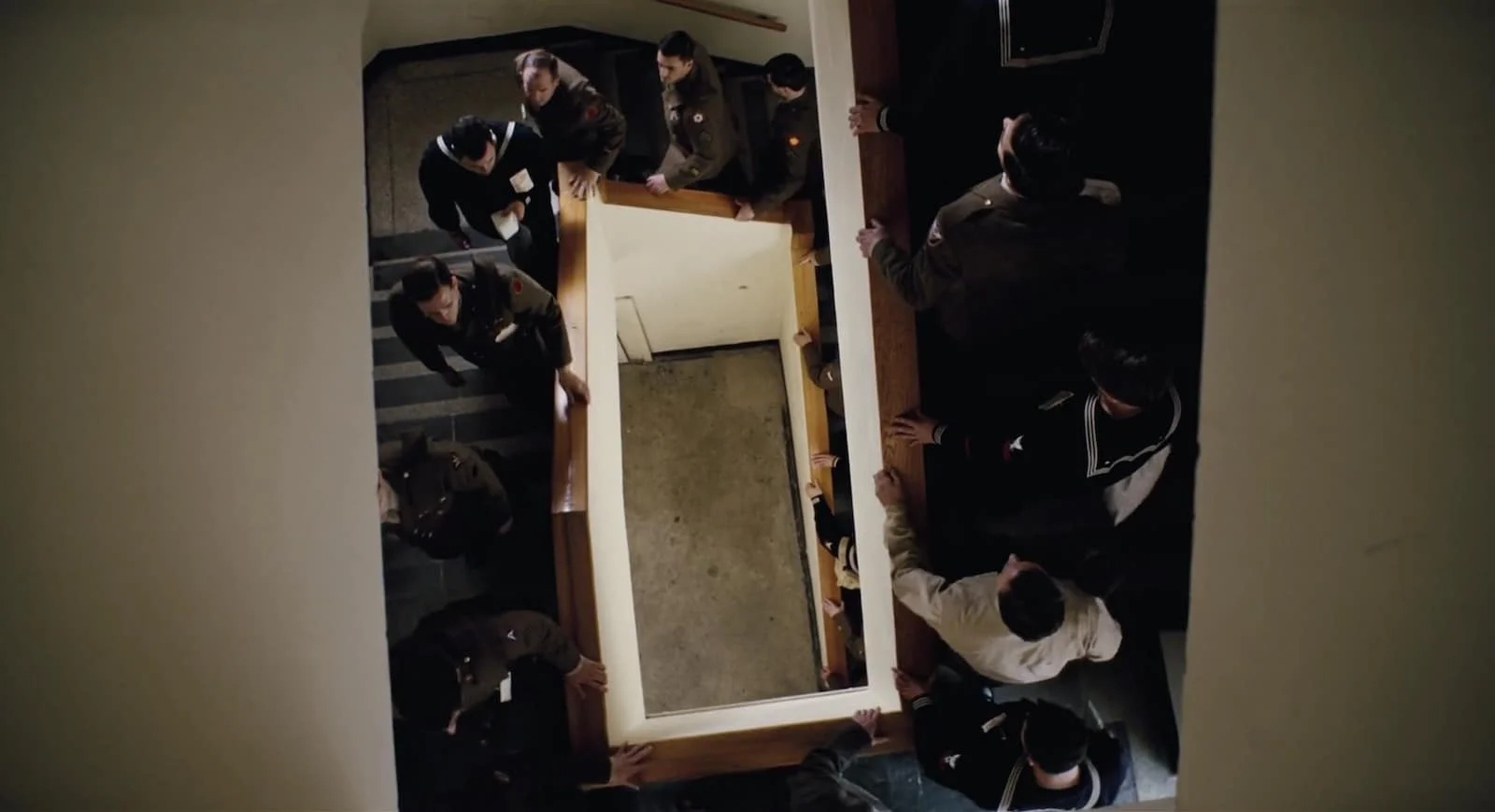

This overhead shot example conveys swirling emotions and confusion.
As The Master unfolds, these two critical overhead shots reverberate in powerful ways.
Aerial shots have inherent "wow" effect, but to make them truly memorable, the best directors know how to set them up contextually in a scene. Anderson's contrast from an extreme close-up of Quell to a wide overhead shot isn't just cool, but it defines who Quell is.
They're overhead shots with a purpose.
You can view the entire shot list of this scene below:
When can we use the classic, "god's eye view" shot?
god's eye view
What's god's eye view?
Speaking of the god’s eye view, what if you want to curse God? Look no further than Clint Eastwood’s Mystic River for an innovative take on the god’s eye view. In this scene, Sean Penn finds out his daughter was murdered.



Why, god’s eye view, why?! (from Mystic River)
We switch to the overhead to show Penn’s physical power and to also show his wave of grief. He’s looking to god for the answer of who did this. The rest of the movie will be about him trying to figure it out.
This god’s eye shot haunts the movie.
How about something lighter, like everlasting love and heartbreak?

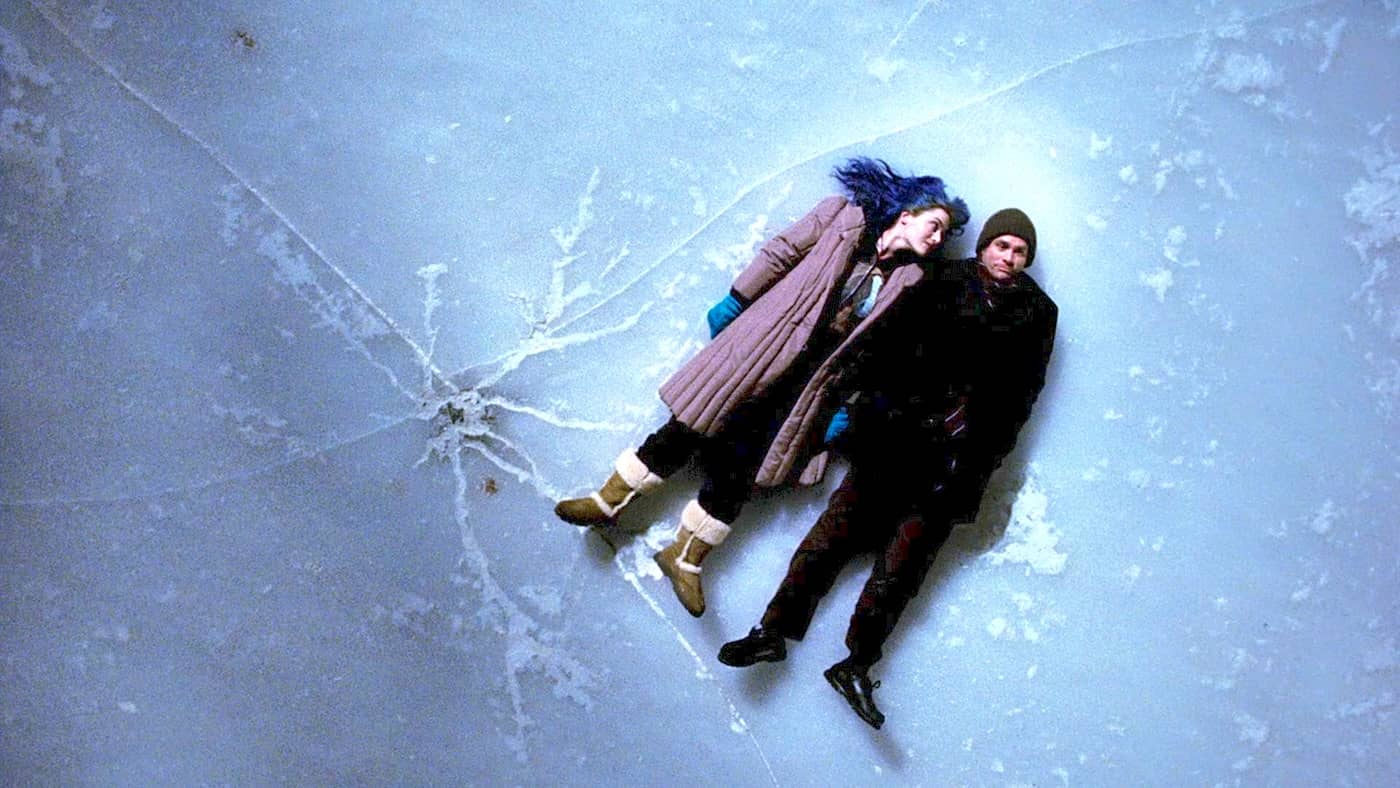

Settling for each other and an overhead shot (from Eternal Sunshine of the Spotless Mind)
This overhead shot is from Michel Gondry’s Eternal Sunshine of the Spotless Mind. In it, Gondry uses the couple on the ice to show the fracture in their world. For now, the cracks run around them. But we know they will soon run through them.
We can see the bliss for now but also sense the impending doom of the breakup.
The overhead shot becomes a theme of Eternal Sunshine.
This one is a medium shot.



Overhead shot on Jim Carrey.
The overhead shot becomes a theme of Eternal Sunshine. This one is a medium shot. The overhead shot has even become a subtle signature of Martin Scorsese. In the video below you can see him using the god’s eye technique to give us a new perspective on the numerous worlds his characters inhabit.
A Scorsese guide on how to film an overhead shot.
Perhaps the most haunting comes at the end of Taxi Driver.



Now that’s how to film an overhead shot. Taxi Driver
Robert De Niro’s Travis Bickle stares up and mocks us. We, positioned overhead, in a god’s eye view, looking down and judging his actions. Is he the hero or villain in this movie?
Scorsese invites us to make our own choice with this aerial shot example.
CAMERA ANGLES
Get Inspired. Explore More Angles.
Explore the different types of camera angles, and learn how to combine them with other shot specs for visual storytelling.
Different Types of Camera Angles
up next
The Best Wide Shots
Are there any aerial shots in movies that should have made our list? Did you enjoy our shot analysis? Let us know in the comments!
Now that you’re on top of the world with the aerial shot, let’s see if you can master the wide shot. We have lots of interesting ways for you to make the shot your own.
Up Next: The Best Wide Shot Examples →
Share your vision with elegant shot lists and storyboards.
Create robust and customizable shot lists. Upload images to make storyboards and slideshows.
